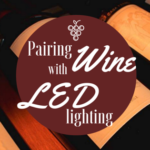There was once a time when we relied almost exclusively upon the sun for light, when people lived and died on the same fairly farm where they’d been born, and news traveled at the speed of horseback. Over the past century, advancements in technology have completely reformed what it means to be human, allowing us to live increasingly urbanized environments, providing us with access to many of the luxuries which we have come to take for granted. But this modern lifestyle has come with some costs, most notably when it comes to our health.
Research has now explicitly linked the consumption of highly processed foods to obesity related illnesses, and shortened lifespans. And yet many Americans, especially those living in low-income communities, struggle with limited access to essentials like fresh produce. As rural farmland continues to give way to urbanization, farmers markets are replaced by supermarkets, and in some areas, convenience stores, liquor stores, and fast food restaurants have become the main source of sustenance. 
In response to the so-called “grocery gap”, innovative groups like the Food Trust have dedicated years of research and resources to finding a solution. Ironically, though it may have been technological advancements that helped our society to eliminate small farms and embrace a diet of processed foods, it may very well be technology which can help to solve these problems as well.
Researchers across the country have turned to solutions like indoor farming to help provide access to fresh produce even in the heart of densely populated cities. Of course, the first obstacle of growing plants indoors is the need to provide adequate lighting. This not only requires a lot of energy, but also can produce a lot of heat- which can have a negative impact on growth rates, especially for cold-weather produce.

Naturally, growers have begun to look for new lighting solutions, and it is no surprise that LED technology has quickly come to the forefront of horticultural research. When compared to traditional incandescent or high pressure sodium bulbs, LEDs offer the benefit of energy efficiency, cooler operating temperatures, and stricter control of brightness and wavelength. New studies have shown that specific color combinations or “light recipes” can help to encourage increased growth, flowering, and fruit production especially when using combinations of red and blue LEDs. Research conducted by Professor Chungui Lu at Nottingham Trent University has suggested that artificial light may not only product larger plants, but may also provide additional health benefits such as the ability to reduce excess nitrates in lettuce.

Large electronics corporations and tech companies across the globe have been quick to move into this new arenaof research and development. This past summer, Phillips Lighting presented its new GreenPower Dynamic LED prototype at the GreenTech convention, demonstrating technology which allowed them to adjust LED colors to meet the needs of a wide variety of crops. Sony has even developed a specialized horticultural LED system called Brightturf, boasting the ability to grow grass up to six times faster than normal.
Aside from the benefits of lighting control, the compact nature of LEDs has also contributed to the development of “vertical” farming, whereby plants are grown in shelf-like layers to make more efficient use of limited space, especially in urban environments. As with any new technology, progress is slow but steady, and hopes are high that these types of advancements will soon make it possible for city dwellers to once again have access to locally grown fruits and vegetables. With the combined efforts of advocacy groups, and companies like Sony and Phillips, supermarkets of the future may become more like the markets of the past thanks to LED technology.
Though Inspired LED‘s current product line does not include horticultural lights, we are committed to the ongoing research and development of LED technology in a variety of fields. Learn more about urban and vertical farming by clicking here, or check out the sources below for more information.
Sources:
http://thefoodtrust.org/uploads/media_items/grocerygap.original.pdf
http://www.hortweek.com/research-probes-benefit-using-led-light-recipes/products-kit/article/1410292




